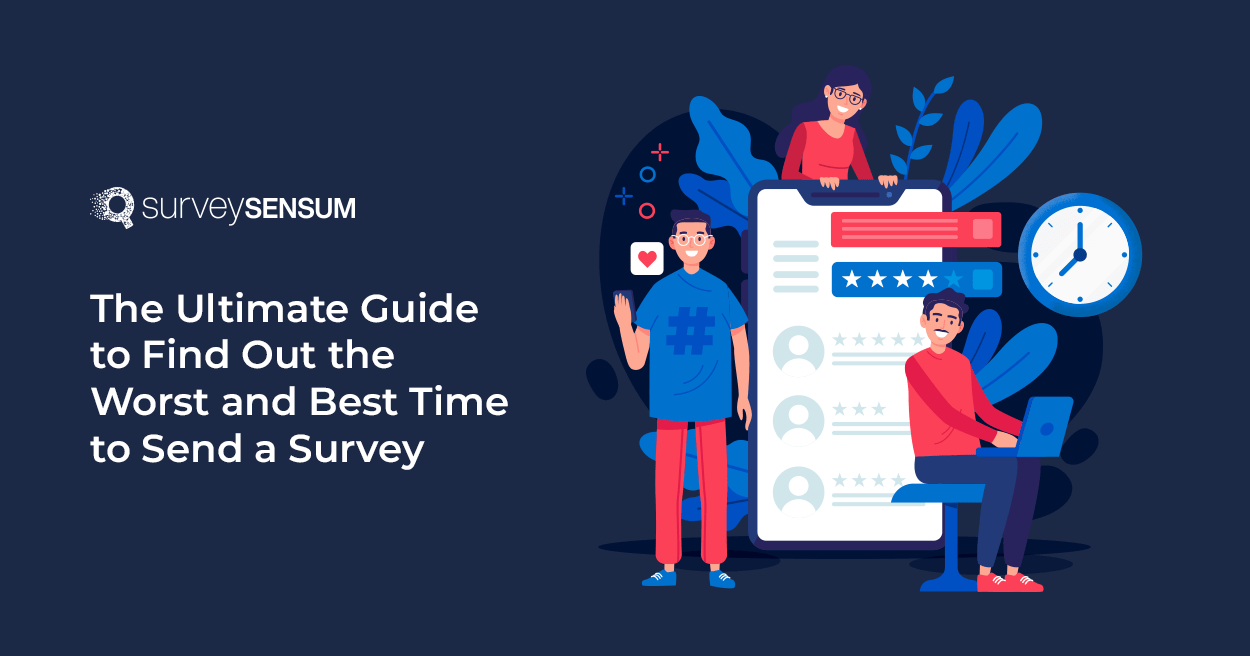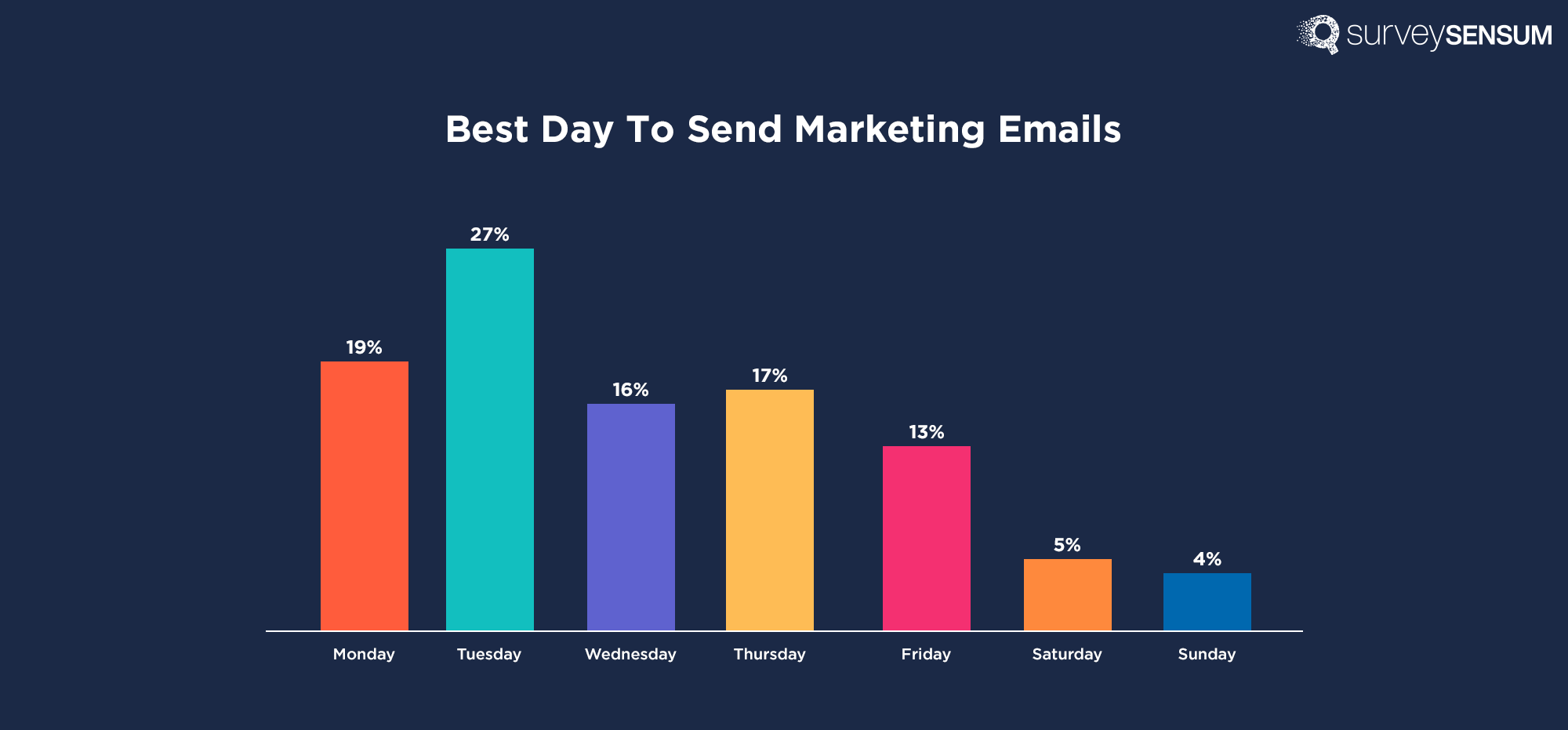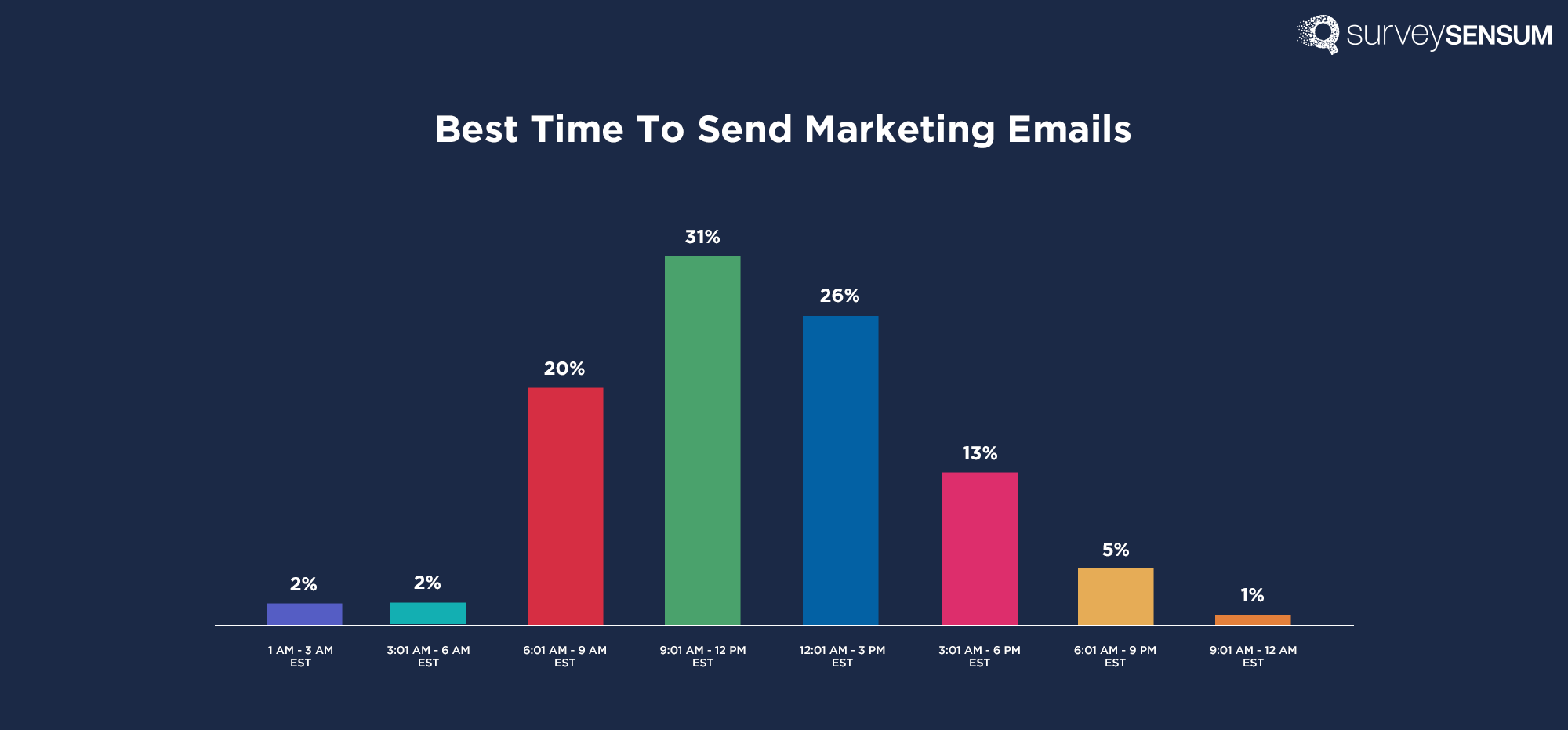Innovative Team Collaboration: 3 Tools for Seamless Project Management
Read More

On a Sunday evening, I was relaxing on my couch, binge-watching my favorite series after a busy weekend. Suddenly, my phone buzzed with a notification—an email from a clothing brand I had recently purchased from. They were asking for feedback on their products. I sighed and closed the notification. After all, on a lazy Sunday, the last thing I wanted to do was complete a survey.
Like many others, this company was passionate about improving its services and relied on customer feedback. Yet, they didn’t get the desired responses.
The issue — they were sending surveys at the WRONG time.
Well, understanding the ideal survey timing to get the maximum response rate can be challenging. But don’t worry; this blog will provide you with the worst and best times to send a survey so that you can evaluate your strategies and gather authentic customer feedback.
Let’s get started.
Did you know that Tuesdays are often the most productive days? That’s when people are usually more focused and ready to engage. So, if a company sends a survey on a Tuesday, the response rate will be high.

Source – Hubspot
Aim for mid-morning or afternoon, roughly between 9 AM and 12 PM, when people are focused and open to short tasks.
Don’t forget to consider the best time to send a survey email and avoid bombarding them with surveys on the weekends because not everyone feels like answering surveys on the weekends when they relax and don’t want to think about work stuff.

Source – Hubspot
Be strategic about the type of survey, too. For instance, when someone buys your product, hold off on sending NPS surveys immediately after the interaction; let the experience sink in and send an NPS survey after they have experienced your product.
By picking the right moments, you increase response rates and show respect for your audience’s time and preferences. It’s about creating a considerate survey experience that values their input.
So, start scheduling customer surveys at the right time with SurveySensum.
Event-Specific Surveys play a crucial role in capturing targeted feedback after specific occurrences. Here are three types of such surveys:
Understanding your audience’s demographics—age, gender, location, and profession—allows you to time surveys according to their typical schedules and preferences. Analyzing how your audience behaves regarding engagement, purchase patterns, or interaction with your brand helps you identify optimal times to send surveys.
For instance, if your demographic is predominantly working professionals, timing surveys around their office hours might yield better response rates.
It ensures that you respect their schedules and preferences, increasing the chances of meaningful engagement.
Now you know the best day and time to send a survey, let’s hear it from the industry experts.
In the fast-paced world of customer experience, capturing feedback is essential for businesses striving to enhance their services. However, experts agree that timing is crucial when seeking customer feedback. Have a look at the insights from CX professionals and their experiences with poorly timed surveys at CXQOTD.
The Customer Experience Quote of the Day (#CXQOTD) has emerged as a platform where CX experts share their valuable thoughts and experiences.
While talking about the right time to send the survey, Jeremy, a seasoned CX professional, articulates a critical concern: “If you survey a customer asking them how you did before you completed what you were supposed to do before their problem got solved, then they’re not going to be happy ever, so don’t survey them then. Instead, focus on getting their issue solved and then, at the end of all that, find out how you did.”
Let’s explore further insights from renowned CX experts on the worst times to send surveys:
Roy – “Worst times to survey customers: Too early (before the completion of a transaction) and too late (after the experience fades or the damage is done). And for goodness sake, don’t hit me with the website survey the instant I land on your page.”
Mary – “I don’t think bad timing is the biggest problem. Bad surveys are a much more serious issue, destroying VoC. But, timing-wise, the worst time to send one, in my opinion, is before the customer has had the chance to use the product.”
Tanuj – “Sending an NPS right after product sales, dispatching surveys without completely resolving the customer’s issue, and sending exhaustive yearly surveys about the customer’s journey.”
Jenny – “I know a company that sent the survey review emails before the product was delivered. OOPS! #CXQOTD”
Sudha – “Had a funny instance once we were asked to fill a survey at a restaurant even before we ordered, and we were like, ‘Can we order first, eat, and then let you know.'”
Schulbert – “Most of the surveys I get are pointless and a sign of survey fatigue. I ignore them. Those I value most are the ones I am asked face to face when settling bills or checking out.”
Michael – “Getting a survey asking about the customer support line just as I’m unpacking my new drone! I wasn’t sure that was a good omen… #CXQOTD”
Aileen – “I paid for a digital contract program, and before even signing into the program, I received an email asking if I’d refer their platform to a friend for a discount. 1. I’ve already paid for it. 2. Let me sign in and use it a few times, let alone once, and then ask me #CXQOTD.”
In conclusion, the timing of customer surveys is a pivotal factor in the quest to gather valuable feedback. As CX professionals navigate the challenges of seeking feedback, these expert stories shed light on the worst times to approach customers for their opinions.
→ Understanding the customer journey and respecting their experience emerge as key elements in optimizing the timing of surveys.
Start sending surveys at the right time with SurveySensum.
So, those were some insightful experiences shared by the industry experts. Now, let’s learn some tips for optimizing the survey timing.
When it comes to conducting surveys, timing is everything. To ensure you gather valuable insights from your audience, consider the following tips for optimizing survey timing:
So, with these 15 tips, you can easily optimize your survey timings. Now, let’s understand what mistakes you should avoid while sending the surveys.
So, avoid these common mistakes while sending a survey in order to increase the response rate.
Understanding the right moments to request customer feedback through surveys is vital for businesses looking to improve their response rate. The insights covered in the blog provided by seasoned CX professionals underscored the significance of timing, showcasing real-world examples and offering cautionary tales about poorly timed surveys. Their anecdotes highlighted the importance of completing transactions, product usage, and respecting customers’ ongoing experiences before seeking feedback.
By following the best practices and avoiding common survey pitfalls, businesses can elevate their feedback collection strategies, fostering genuine customer engagement and improving service offerings.
To send a survey at the right time to gauge customer satisfaction, consider using a robust customer feedback tool like SurveySensum. This powerful platform goes beyond feedback collection. With advanced features like survey throttling, Text Analytics, customizable dashboards, and many others – it analyzes and extracts actionable insights from customer feedback.
And not just that! With end-to-end support from CX experts, you can ensure that your CX program succeeds and achieves the goal you are aiming for!
